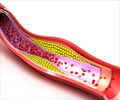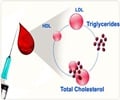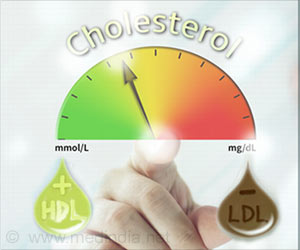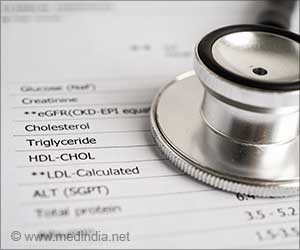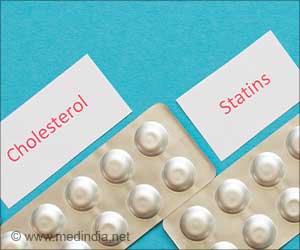Between 1999 and 2006, the prevalence of adults in the U.S. with high levels of LDL cholesterol, the bad cholesterol, decreased by about one-third.
Between 1999 and 2006, the prevalence of adults in the U.S. with high levels of LDL cholesterol, the "bad" cholesterol, decreased by about one-third, according to a study in the November 18 issue of JAMA. But a high percentage of adults still are not being screened or treated for high cholesterol levels.
Elevated levels of low-density lipoprotein cholesterol (LDL-C), the major atherogenic lipoprotein, are a primary focus for cholesterol management of the National Cholesterol Education Program Adult Treatment Panel III (NCEP ATP III). "The guidelines set LDL-C target levels that are based on the history of coronary heart disease (CHD) or risk for developing CHD in the next 10 years," the authors write. Few studies have described the prevalence of high LDL-C levels and the use of lipid-lowering medications across all CHD risk categories, according to background information in the article.Elena V. Kuklina, M.D., Ph.D., of the Centers for Disease Control and Prevention, Atlanta, and colleagues investigated trends in the prevalence of screening, current use of cholesterol-lowering medication, and high LDL-C levels across 4 study cycles (1999-2000, 2001-2002, 2003-2004, and 2005-2006). The researchers used data from the National Health and Nutrition Examination Survey (NHANES), and restricted the study sample to fasting participants age 20 years or older (n = 8,018), excluded pregnant women (n = 464) and participants with missing data (n = 510), with the final study sample consisting of 7,044 participants.
Overall prevalence for high LDL-C levels decreased from 31.5 percent in 1999-2000 to 21.2 percent in 2005-2006. "However, this prevalence varied substantially by risk category. The highest prevalence of high LDL-C levels was observed in the high-risk ATP III category with 69.4 percent and 58.9 percent during the first and last cycles, respectively," the authors write. Participants with a self-reported history of CHD, angina, heart attack, stroke, and diabetes mellitus or participants with a fasting blood glucose level of 126 mg/dL or greater were placed in the high ATP III risk category.
There were no significant changes observed in the weighted age-standardized screening rates from 1999-2000 to 2005-2006. Among participants with high LDL-C levels, 35.5 percent were unscreened, 24.9 percent undiagnosed, and 39.6 percent untreated or inadequately treated in 2005-2006. In the high-risk category, about one-fifth of participants were eligible for lipid-lowering drug therapy but were not receiving it in 2005-2006.
"Self-reported use of lipid-lowering medications increased from 8.0 percent to 13.4 percent, but screening rates did not change significantly, remaining less than 70 percent during the study periods," the authors note. They add that the goal of improving screening rates may be hindered by the lack of consensus regarding the age at which screening should start.
Source-Eurekalert
SRM






